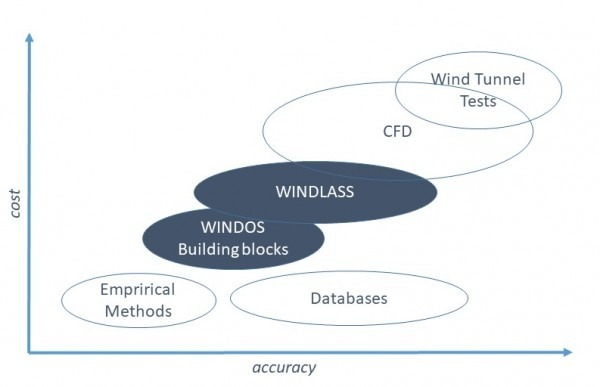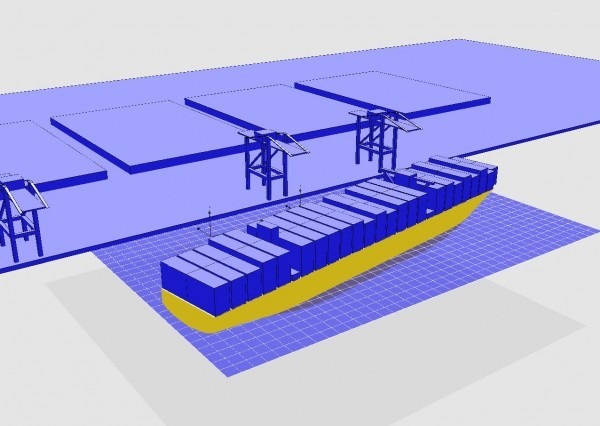MARIN’s software WINDOS provides a cost-effective way to assess the impact of wind loads on ships and offshore constructions.
Wind forces contribute significantly to the total environmental loads on large vessels and offshore constructions and are of importance for the mooring, dynamic positioning and manoeuvring of floating structures. Recent incidents offshore and in ports and terminals show that the prediction of exceeding operational limits due to high wind loads is still a challenge.
WINDOS software bridges the gap between the simple calculation models, provided by the classification societies, and more accurate and expensive CFD analyses or model testing. Extensive wind tunnel tests were carried out at the Netherlands Aerospace Centre (NLR) to validate and extend the calculation model.
An easy to use interface supports design and engineering companies when they are developing models for floating structures. Each structure is composed of a number of standard building blocks which include rectangular prisms, cylinders, lattice structures, ship hulls, helicopter decks and user defined components. Additionally, WINDOS is able to compute the drag, lift and overturning moment on arbitrary structures in various tilted conditions. Theoretical and empirical relations are used to calculate interactions (shielding) between the components and lift forces on elevated and tilted decks.
Future developments
Currently, WINDOS is successfully deployed by a large client base, particularly by design and engineering companies. The WINDLASS JIP will provide enhanced functionalities to the WINDOS software to predict wind loads for operational use in the port environment by adding building blocks of the port to show shielding interactions. Or by adjusting the input wind profile based on measurements or CFD. Dynamic mooring line loads with peak values will be studied for wind spectra in the port environment, comparing full-scale measurements with time domain simulations.
Considering the 3D wind field in the port environment, the tool will compute wind loads on the vessel and finally estimate the quasi-steady line and fender loads for a given mooring configuration. The new version of WINDOS is also expected to be used by vessel operators, pilots and terminal operators to estimate loads for a specific vessel at a specific location in arbitrary wind conditions.



